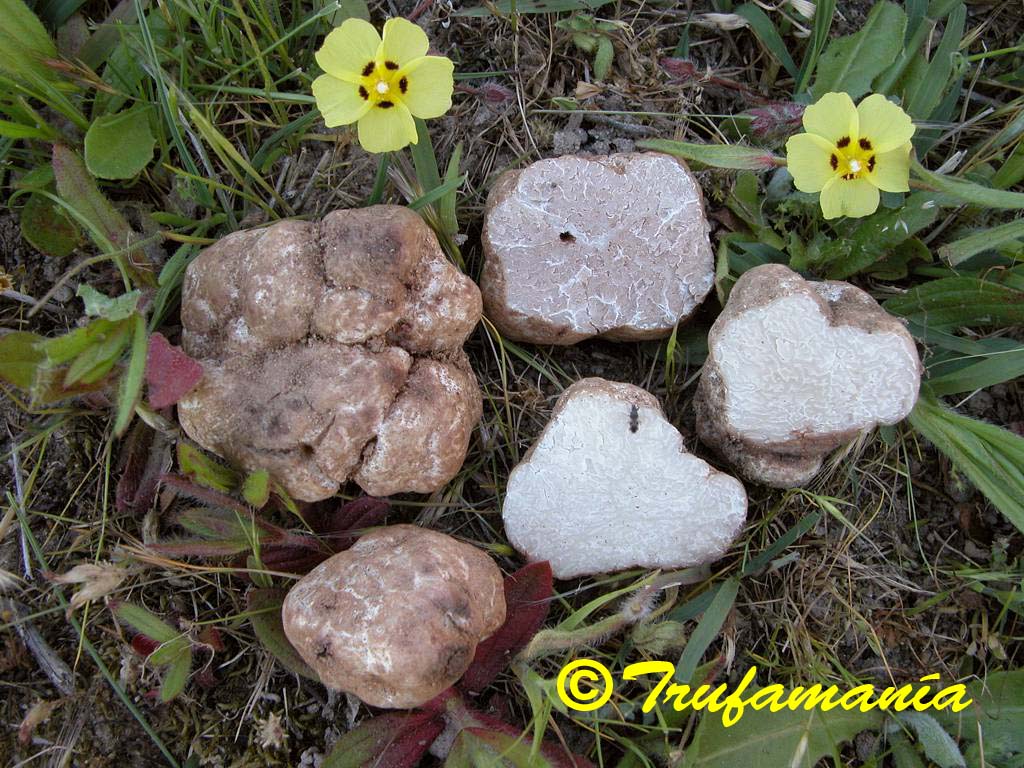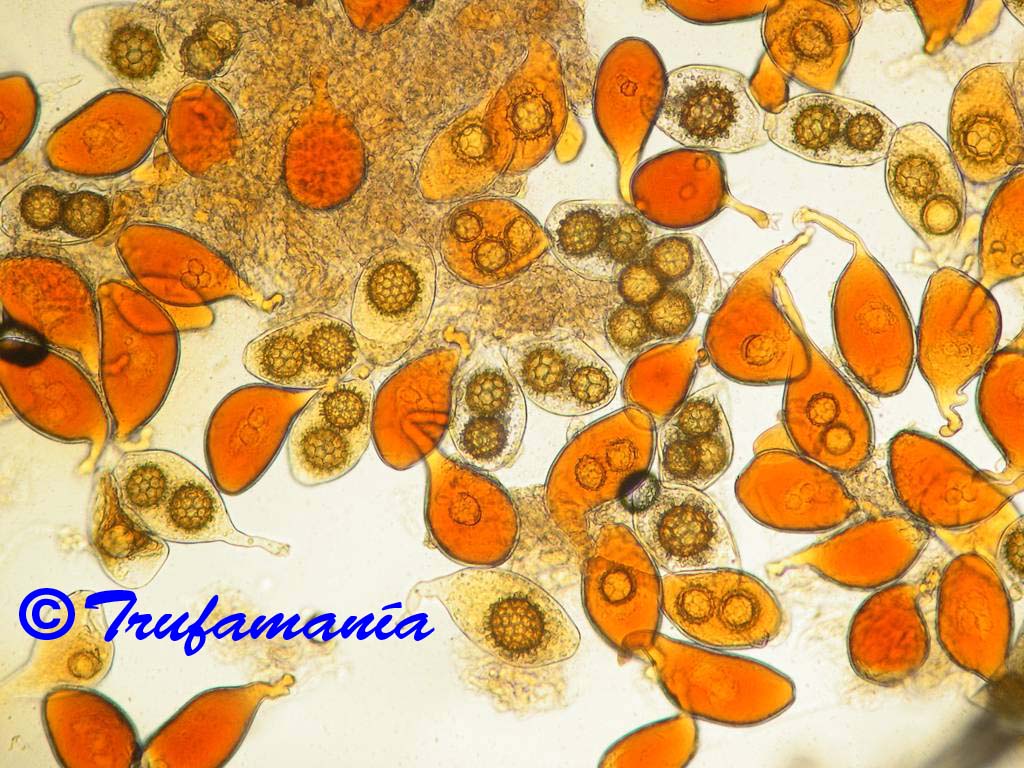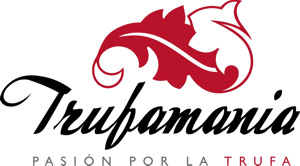TUBER GENNADII (Chatin) Patouillard
Bull. Soc. Mycol. Fr. 19: 255 (1903)

(Click on the picture to see more images)
Synonyms:
Terfezia gennadii Chatin, Bull. Soc. bot. Fr. 43: 613, ilustración p. 616 (1896)
Tuber lacunosum Mattirolo, Malpighia 14:46, tab. I ilustración f. 23-27 (1900)
Loculotuber gennadii (Chatin) Trappe, Parladé & I.F. Alvarez, Mycologia 84(6): 927 (1992)
Macroscopic characters:
Ascomata: hypogeous, subglobose or irregular in form, lobed, deeply sulcate, 1-5 cm in size, dirty white at first, then light brown, smooth.
Gleba: friable, solid, whitish at first, becoming light gray, light brown at maturity, marbled with numerous, thin, white, meandering veins. Characteristically loculate, sometimes shows a spongy aspect, more evident in exsiccata.
Odour: distinctive, faint when harvesting.
Taste: pleasant, not much persistent
Habitat
Sandy soils with mediterranean climate, sharing habitat with Terfezia spp. They ripen in spring. We find Tuber gennadii associated with Tuberaria guttata y Helianthemum spp. in pastures without trees.
Notes:
Tuber gennadii is a little known truffle, often mistaken with Tuber asa Tulasne & C. Tulasne (1851). In the original description of Tuber asa Tulasne & C. Tulasne (1851), spores are globose and there is not mention of citriform or eye-shaped spores. According to Alvarez et al., who examined the holotype of Tuber asa, they not found eye-shaped spores or gleba chambers, and they found globose spores with reticulum 2,5-4 µm high. Most determinations of Tuber asa in Spain describe the existence of eye-shaped spores. If we take into account the above considerations they should be Tuber gennadii.
Tuber asa Tul & C. Tul. should be a rare species, with very few collections and very misunderstood. The specimen of Tuber asa preserved in Mattirolo's herbarium, sent by Ferry de la Bellone, was reviewed by Trappe in 1968 and determined as Delastreopsis oligosperma (=Tuber oligospermum).
Tuber gennadii is an edible truffle, gastronomically not prized

(Click on the picture to see more images)
Microscopic characters:
Asci: ellipsoid to clavate or pyriform, thick-walled (1-3 µm thick), long stalked (up to 100 µm), more or less arranged among paraphyses in a hymenium, 90-150 x 50-70 µm excluding stalk, 1-3 (-4)-spored (usually 2-3-spored).
Ascospores: 28-43 x 27-40 µm excluding ornament, size variable depending on number of spores in the ascus, Q range = 1,00-1,37, globose to broadly ellipsoid or citriform, yellow, yellow brown at maturity, translucent, ornamented with a regular reticulum with polygonal meshes 4-5 (-7) µm high, 7-10 µm long, 4-6 across width of spore.
Peridium: 200-500 µm thick, composed of agglutinated, interwoven, hyaline hyphae. These hyphae are mixed with subglobose cells in the innermost layer. The outermost layer may be entirely composed of hyphae and sometimes we can see emanating hyphae.
Glebal tissue composed of interwoven, hyaline hyphae.
Comentarios: We found considerable variation in the form of spores in the various collections, some with very few eye-shaped spores and many globose spores (Q=1,00-1,06).
| Antonio Rodríguez trufamania@gmail.com antonio@trufamania.com |



